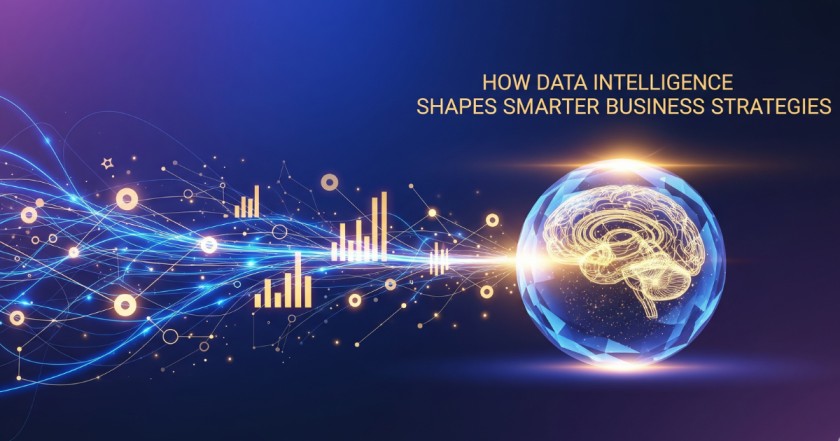
The business world moves fast, and decisions that took months now need to happen in days—or even minutes. For US companies, staying competitive means turning raw data into real business value. That’s where data intelligence comes in.
Data intelligence is more than just charts and reports. It’s the combination of artificial intelligence (AI), machine learning, analytics, and strategic thinking to transform massive amounts of information into actionable insights. Businesses that use data intelligence are not just reacting to market changes—they’re predicting them.
Whether you run a growing e-commerce store, a manufacturing plant, or a nationwide chain, mastering data intelligence can be the difference between thriving and falling behind.
Read This Also: Why an AI Security Certification Could Be Your Career Game-Changer
Understanding Data Intelligence
Data intelligence is the process of collecting, analyzing, and interpreting data to make smarter business decisions. It uses a mix of traditional analytics and advanced AI algorithms to uncover patterns, predict outcomes, and guide strategies.
Core elements include:
- Data collection: Gathering information from various sources like sales, social media, customer feedback, and sensors.
- Integration: Combining different datasets into a single, unified view.
- Analysis: Using AI and analytics tools to detect patterns and trends.
- Visualization: Presenting data in easy-to-read formats, such as dashboards.
- Prediction: Using historical and real-time data to forecast future events.
Unlike basic analytics, which tells you what happened, data intelligence can tell you what will happen—and even how to make it happen.
Why US Businesses Should Care About Data Intelligence
The US market is competitive. Every business—large or small—is fighting for attention, efficiency, and growth. Data intelligence provides the edge you need.
- Competitive advantage: Make decisions faster and with more accuracy.
- Customer-focused strategies: Personalize offers, predict customer needs, and improve retention.
- Operational efficiency: Reduce waste, optimize supply chains, and automate repetitive tasks.
- Risk management: Spot compliance risks, fraud, or operational weaknesses early.
- Adaptability: Adjust strategies based on real-time market signals.
For example, a small online store in Texas can use AI-driven analytics to forecast demand for products during seasonal sales, avoiding overstock and lost sales.
Core Pillars of Data Intelligence in Business Strategy
1. Data Collection & Integration
US companies generate data from POS systems, CRMs, social media, IoT devices, and more. Without integration, these data streams stay isolated in silos. Data lakes and API integrations help centralize and organize this information for better insights.
2. Advanced Analytics & Predictive Modeling
Predictive modeling uses AI to answer questions like: “What products will sell next month?” or “Which customers are most likely to churn?” A retail chain can predict inventory needs before the holiday rush, saving money and boosting sales.
3. Visualization & Dashboarding
Decision-makers need clarity, not complexity. AI-powered dashboards can summarize millions of data points into simple visuals, helping leaders make fast, informed choices.
4. Automation in Decision-Making
From automated pricing strategies to AI-recommended marketing campaigns, automation reduces decision delays and keeps your business moving forward.
Role of AI Tools in Data Intelligence
The right AI tools can take your data strategy to the next level.
Categories of AI tools for US businesses include:
- Data preparation tools: Clean and organize data automatically.
- Predictive analytics platforms: Forecast sales, demand, and trends.
- Customer insight platforms: Track behavior and preferences.
- BI dashboards: Real-time performance monitoring.
- Industry-specific AI tools: Tailored solutions for healthcare, finance, retail, and manufacturing.
A typical workflow might look like this: raw sales data → AI analysis → visual dashboard → strategic decision. This flow turns what used to take weeks into a few hours.
Read This Also: What Is AEO & GEO – Everything You Need to Know
Practical Applications for US Businesses
Retail & E-Commerce
AI-driven product recommendations, dynamic pricing, and inventory optimization can increase sales and reduce waste.
Finance & Banking
Fraud detection systems can flag suspicious transactions in seconds, while predictive analytics can guide investment decisions.
Healthcare & Life Sciences
AI can predict patient outcomes, optimize scheduling, and ensure compliance with HIPAA regulations.
Manufacturing & Supply Chain
Predictive maintenance reduces downtime, while AI forecasting ensures materials arrive exactly when needed.
Marketing & Advertising
Audience segmentation, hyper-personalized campaigns, and ROI tracking make every dollar count.
Steps to Implement Data Intelligence in Your Business
- Define clear objectives – Align data projects with specific business goals.
- Audit your data – Identify gaps, inconsistencies, and unused sources.
- Choose the right AI tools – Select platforms that fit your industry and size.
- Build a skilled team – Combine tech experts with business strategists.
- Start small – Run a pilot project to test your approach.
- Measure and improve – Continuously refine based on results.
Challenges & How to Overcome Them
- Data quality issues: Invest in data cleaning processes.
- Privacy & security concerns: Follow US data privacy laws like CCPA and industry regulations.
- Resistance to change: Provide training and clear ROI examples to staff.
- Integration hurdles: Use middleware or cloud platforms for easier adoption.
- Budget limits: Start with scalable solutions to grow over time.
The Future of Data Intelligence in Business Strategy
As AI tools become more advanced and affordable, data intelligence will move from a competitive advantage to a necessity.
Emerging trends include:
- AI-first business strategies where algorithms guide major decisions.
- Generative AI creating automated insights and reports.
- Real-time strategy updates based on live data streams.
- Greater focus on ethical AI and data transparency.
Businesses that start now will be better prepared for this shift.
Conclusion
Data intelligence is no longer optional—it’s the foundation of modern business strategy. By combining AI, analytics, and smart decision-making, US businesses can predict market trends, improve operations, and connect with customers like never before.
If you want your company to compete and grow in today’s fast-paced market, now is the time to embrace AI-powered data intelligence.
Read This Also: Top 10 Digital Marketing Agencies In The World: Grow Your Business Now!
Checkout Below Services
- Salesforce CRM Analytics Consulting Services
- Salesforce Einstein Discovery / Predictions
- Data Analytics Services
- Data Visualization Services
- Tableau
- AI and Machine Learning
- Agentic AI Services
FAQs
It’s the process of using AI, analytics, and integrated data to make informed business decisions.
AI processes large datasets faster, finds patterns, predicts outcomes, and recommends actions.
Popular categories include predictive analytics platforms, BI dashboards, and customer insight tools.
No, small and mid-sized businesses can benefit from affordable, scalable AI tools.
Start with simple tools for sales forecasting, customer tracking, and marketing automation.
Analytics focuses on what happened, while data intelligence predicts what will happen and how to act.
With the right setup, some businesses see results within a few months.
Risks include data privacy breaches, poor data quality, and over-reliance on algorithms.
Use API integrations, middleware, or cloud platforms that support your existing software.
Expect more industry-specific tools, real-time decision-making, and ethical AI frameworks.


